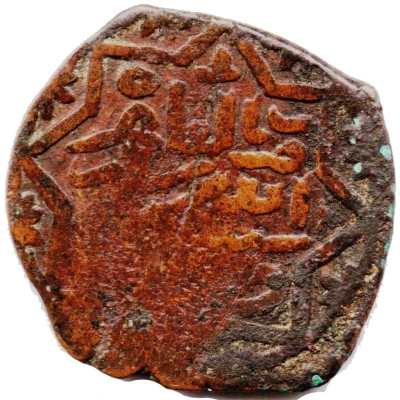


© Cycnos (CC BY-NC)
Fals - al-Mansûr Muhammad II Hamah ND
| Copper | - | 18 mm |
| Issuer | Mamluk Sultanate |
|---|---|
| Sultan | Muhammad II (1361-1363) |
| Type | Standard circulation coin |
| Years | 1361-1362 |
| Value | 1 Fals (1⁄60) |
| Currency | Dinar (1250-1517) |
| Composition | Copper |
| Diameter | 18 mm |
| Shape | Round (irregular) |
| Demonetized | Yes |
| Updated | 2024-10-05 |
| Numista | N#164629 |
|---|---|
| Rarity index | 94% |
Reverse
Two interlaced quadrilobes, flanked by globules forming an eight-pointed star bearing in its center a quarter moon flanked by eight other globules.
Comment
This fals was initially attributed by Paul Balog (in 1964) to the reign of Ali II and to the Tripoli workshop, due to a number of similarities with another fals.However, the poor state of preservation of the copy studied by the latter did not allow a formal identification: studies of new copies later led Lutz Ilisch to reassign this fals in 1998 to the reign of Muhammad II and the Hamah workshop (reference SNAT-Hamah #538-546).
Interesting fact
One interesting fact about the Fals - al-Mansûr Muhammad II (Hamah) ND (1361-1362) coin from the Mamluk Sultanate is that it features a unique blend of Islamic and Mongolian influences in its design. The coin's obverse side features a stylized representation of the Sultan's name in Arabic script, while the reverse side features a Mongolian-style symbol of a stylized tiger, which was a symbol of power and strength in Mongolian culture. This blending of cultural influences reflects the complex history of the Mamluk Sultanate, which was a Muslim state that was established in Egypt and Syria after the Mongolian invasion of the region in the 13th century.



